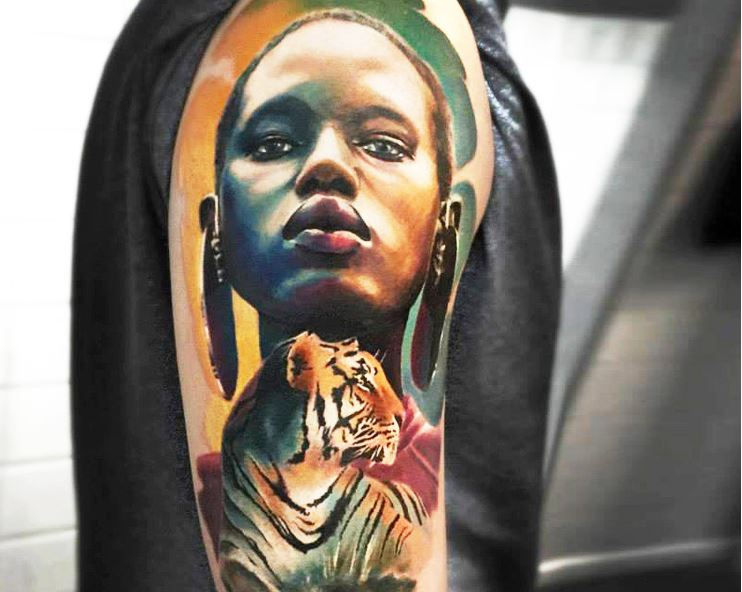History of African Tattoos ( Part I)
- SchizoDelica.INK
- Oct 21, 2018
- 3 min read

Most African tattoo designs signify boldness and courage. These tattoos originated in the bronze age, which means around 5000 years ago. African tattoos fascinate the eyes of all tattoo lovers. People belonged to different cultures and races practiced these tattoos. they held great symbolic importance.
While some tattoos protected the tribal people from every kind of harmful spirits, the others reflect the courage and bravery of a person. While discussing about tattoos that were impressed in the yesteryears, we cannot miss out on African tattoos, which also has its roots firmly laid to the era before Christ in the Egyptian civilization. African tattoos were not borne for ornamental appeal, during the prehistoric ages. However, going back to the pages of history, tattoos in the early ages, were borne not for fashion. To know more about the emergence of African tattoos and its symbolic interpretation, browse through the following lines..
Tattooing in Egypt

The first evidence of tattoos leads back to the mummies in Egypt. The oldest tattoo was found on the mummy of Amunet, a priestess of the Goddess Hathor, during 2160-1994 BC. Interestingly, no male mummies found in Egypt had their body adorned with tattoos. However, male mummies that have been found in other parts of Africa, such as Libya, have tattoos of images relating to sun worship, on their body.
In the tomb of Seti I, dating back to 1300 BC, tattoos symbolizing Neith, a Fierce Goddess, who led warriors into battle, were found on men. The first known tattoo of a person was discovered on Nubian female mummies, dating to 400 BC.
Tattooing In North Africa

Even though Quran does not support the idea of engraving on the body, tattooing as an art form and cultural aspect has survived in the Islamic societies of North Africa. Strict Muslims from the society considered tattooing as unholy as it was considered to be a cause of injury to the body, making the body, a gift of the god, as imperfect in the eyes of Allah. Tattoo was also seen as an obstacle in letting the water penetrate through the skin, hampering the ritual of purification in Islam. But there was a sect of Moroccan women that considered tattooing as a legitimate practice. There are also written documents from the early 20th century, stating that tattooing existed in the Arabic world at the time of Prophet Mohammed. Many traditional forms of tattooing exited in parts of North Africa like, Egypt, Libya, Algeria, Morocco, Tunisia, etc.
Tattooing In Sub Saharan Africa

When Europeans were exploring Sub Saharan Africa, they discovered that the indigenous people of this region practiced a cultural practice of scarring the skin. The Sahel is the region in Africa that stretches from the country of Senegal to the Red sea. The largest tribal group inhabiting the Sahel region is called Fulani. It is also the most heavily tattooed tribes of the region.
Present Era

While contemporary tattoos involve puncturing the skin for inserting pigment, Cicatrisation involves cutting the skin more severely to create wounds, which results in a decorative pattern of scar tissue. This popular technique for scarring involves two steps - piercing the skin and then, rubbing the wound with ash. The latter step is primarily done to inflame the skin, which later heals to form a raised scar. The wounds are periodically re-opened, and inserted with a pebble or pearl, in order to enhance the raised effect. This process used to be carried out on young boys who were about to hit puberty. It was continued until they entered the adulthood. Each tribe had its own individualistic style.
Other African body altering traditions involve extreme forms of body piercing. The basic purpose of the art is to exaggerate body forms by ornamentation. Lips are pierced and objects are implanted inside, causing the lip tissue to elongate and conform to the shape of the implanted object as the flesh heals. Coming back to tattooing, African tribes are still seen with tattoos on their body. Available innumerable designs and forms, tattoos are mainly impressed to portray the symbols, which are unique to their group. This helps them to recognize people of their group and also those that belong to other groups.








Comments